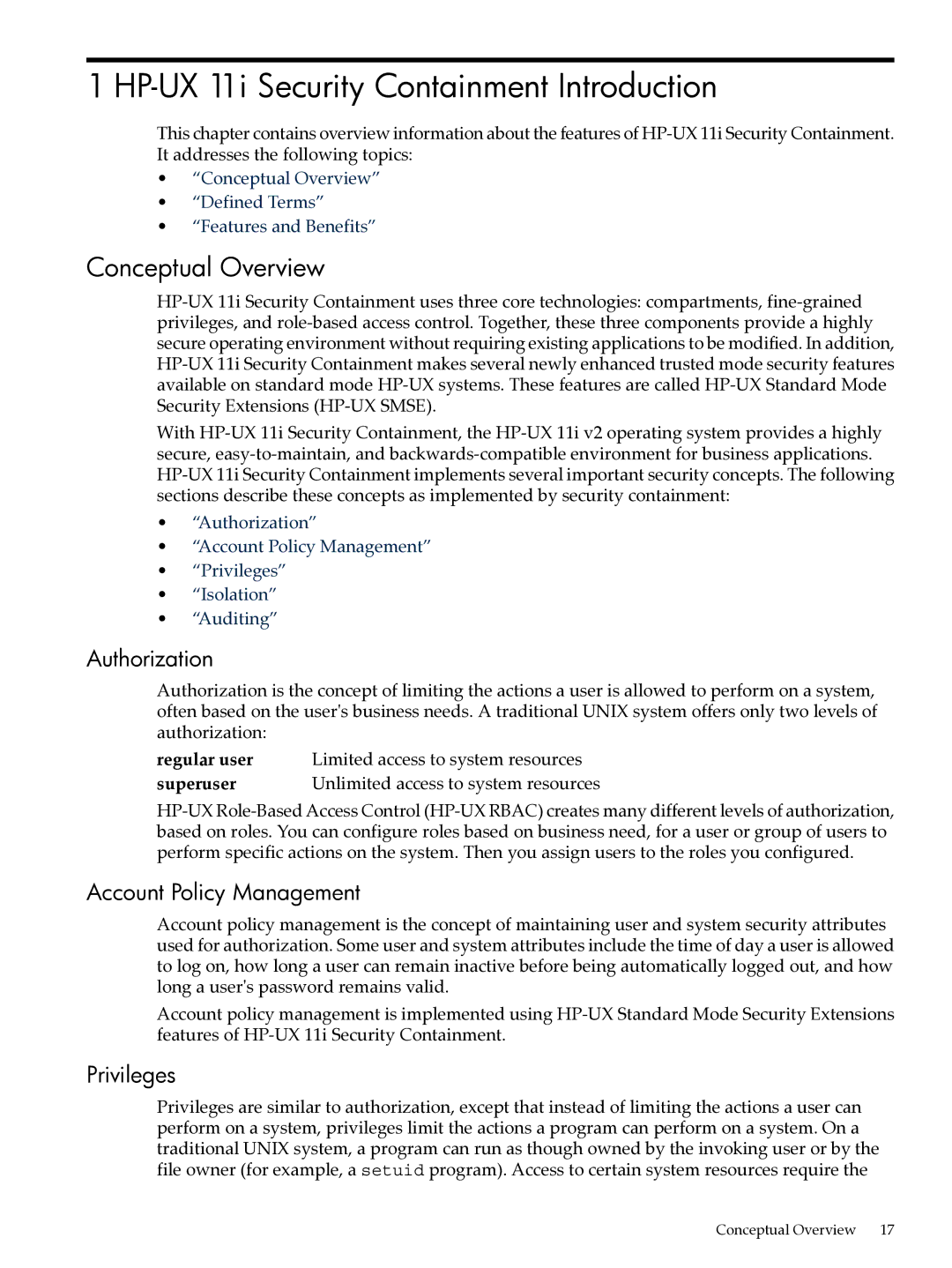1 HP-UX 11i Security Containment Introduction
This chapter contains overview information about the features of
•“Conceptual Overview”
•“Defined Terms”
•“Features and Benefits”
Conceptual Overview
With
•“Authorization”
•“Account Policy Management”
•“Privileges”
•“Isolation”
•“Auditing”
Authorization
Authorization is the concept of limiting the actions a user is allowed to perform on a system, often based on the user's business needs. A traditional UNIX system offers only two levels of authorization:
regular user | Limited access to system resources |
superuser | Unlimited access to system resources |
Account Policy Management
Account policy management is the concept of maintaining user and system security attributes used for authorization. Some user and system attributes include the time of day a user is allowed to log on, how long a user can remain inactive before being automatically logged out, and how long a user's password remains valid.
Account policy management is implemented using
Privileges
Privileges are similar to authorization, except that instead of limiting the actions a user can perform on a system, privileges limit the actions a program can perform on a system. On a traditional UNIX system, a program can run as though owned by the invoking user or by the file owner (for example, a setuid program). Access to certain system resources require the
Conceptual Overview | 17 |
